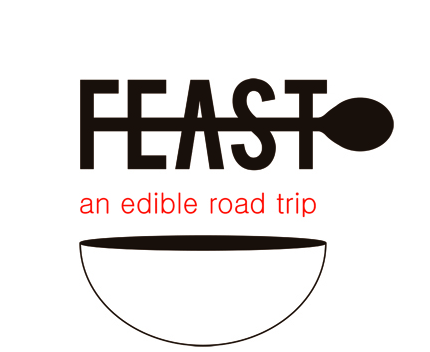Spring Island (Part 3/3): Wild Food
Have you ever snacked on sea rocket that’s been foraged from a west coast high tideline? Neither had I, at least not until we visited Spring Island. If you HAVE already snacked on sea rocket foraged from a west coast high tideline, I think you’re intensely cool.
During our time with West Coast Expeditions (WCE), we were exposed to a number of foods that, despite the fact they’re in our own backyard, we hadn’t given much thought to.
Take seaweed, for instance. I’ve eaten sushi more times than I can count, but I hadn’t realized the possibilities of working with Pacific kelp. There are massive, sprawling underwater forests of it all over the west coast, and while they’re not the easiest things to paddle through in a kayak, they’re vital to the environment.
Kelp forests are densely-populated eco-systems, housing thousands of species and acting as enormous carbon sinks for the ocean. They’re also edible!
James (WCE’s chef) pickled some bull kelp while we were visiting, and we asked him to give us a few other uses for west coast kelps/seaweed, most of which are best harvested in late spring. Here are some of his suggestions:
Bull kelp can be pickled, and/or added to soups (miso is especially good).
Fucus (a.k.a. rock kelp) can be fried into ocean ‘popcorn.’
Giant perennial kelp can be deep-fried, or dried then crumbled.
Finally, sea lettuce is great as a fresh salad with ponzu sauce (sea lettuce is also what's used to make sushi paper).
There are so many other Pacific ocean treats, including sea urchins, oysters (they’re most famous off the east coast of Vancouver Island), mussels, crabs, goose-neck barnacles (which are gnarly, dinosaur-inspired things),
and of course, plenty of fish. I encourage everyone to check out Ocean Wise, a phenomenal program developed by the Vancouver Aquarium that allows consumers to more easily access sustainable seafood. If you’d like to read more about it, here’s a post about Ocean Wise from my time in Richmond.
Several days before we arrived, one of the WCE guides caught an 60-pound halibut from his kayak, and James served (some of it) to us pan-fried, and in ceviche. We also ate locally-caught salmon, crab, spot prawns, and ling cod – Spring Island is clearly a place for sustainable seafood lovers.
On land, there were all kinds of food to be foraged. We snacked on wild salmonberries and huckleberries,
and our introduction to sea rocket was enlightening. It looked like arugula, tasted strongly of wasabi, and led us to a very long conversation about how it could be used (I’d like to try it in a salad with fresh, juicy peaches).
Wandering through the forest, we nibbled on the bright, citric tips of hemlock, which can apparently be used as an appetite suppressant.
There are also various kinds of mushrooms growing in the woods, though you definitely need to know your stuff before attempting to pick and eat those.
James and a few of the guides also tend a small garden, with raspberries and a variety of herbs for cooking.
The food prepared for us by James was far beyond what I’d expected, including our midday meals. Lunches were packed up, loaded into the kayaks, and eaten – picnic style - on one of the surrounding islands. After hours of paddling, a peanut butter sandwich and apple would have easily pleased me, so you can only imagine my utter joy as I ate a Nicoise salad, roasted salmon, fresh fruit, vegetables, cookies, and hot tea. All of this while on a driftwood throne overlooking the ocean.
My final surprise? The day we kayaked over to the nearby Kyuquot First Nations village to get pie from Eric, who was described to me as “The Jewish guy from Seattle who comes here every summer to serve pie from his café.”
He was a friendly man who didn’t seem phased by my immediate first question, “How on earth did you end up here?” Turns out his parents used to work at Bamfield, a marine research field station just south of Kyuquot, so he spent many childhood summers on the west coast.
He still runs a catering business out of Seattle, but he and his wife spend a great deal of time in Kyuquot, and he often cooks for the crew of the boat that arrives weekly to bring supplies to the village.
He just recently had a new ventilation system installed, and plans to serve dinners out of his small restaurant regularly. I had certainly not expected to chat about labneh, za’atar, and sumac with a man from Seattle while on a remote BC kayaking trip. I was already feeling pretty fortunate, and counted myself even luckier after.
-LA
(Parts 1 and 2 of our feature on Spring Island can be found here and here).
To go with all this talk of the ocean, here is BC's Hannah Georgas:















